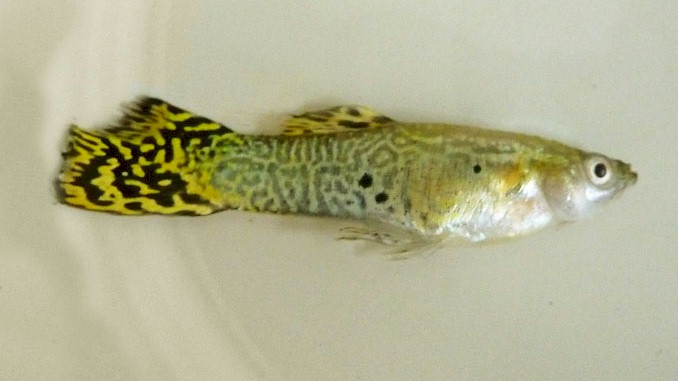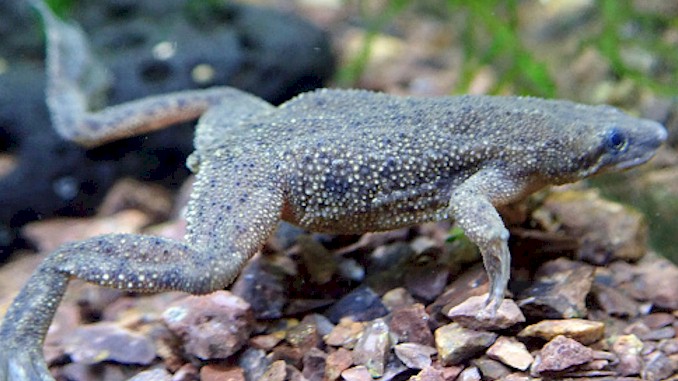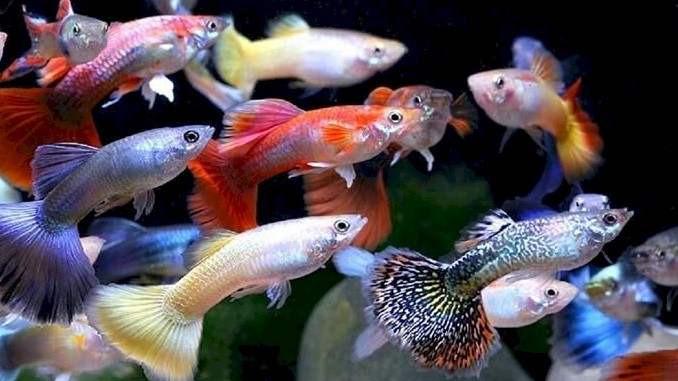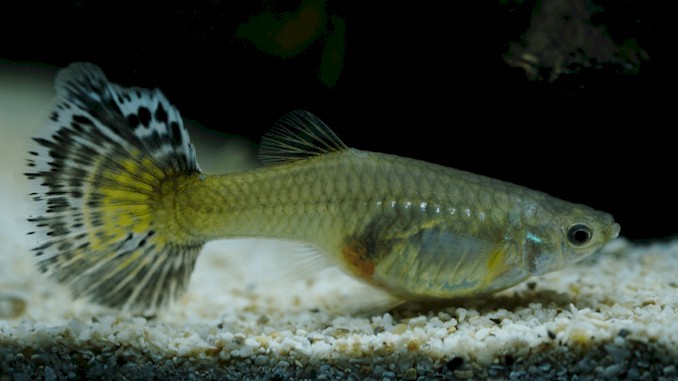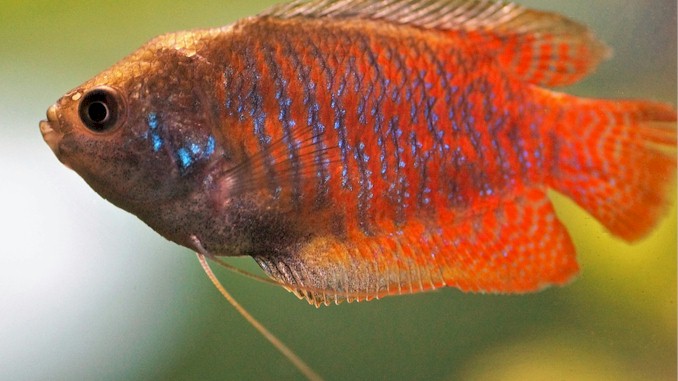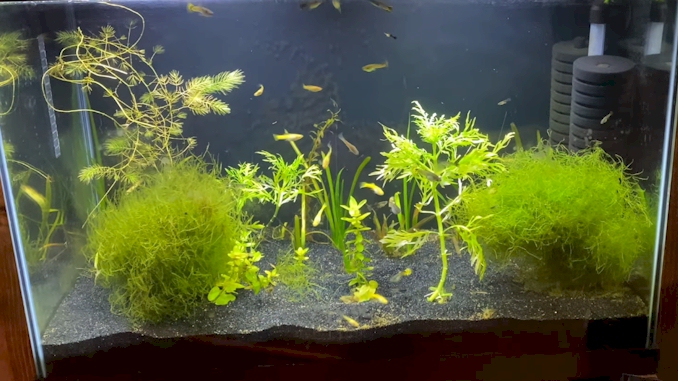The Ultimate Guide to Prevent Guppy Death
If you are a guppy lover like me, you know how frustrating and heartbreaking it can be to see your guppies die one by one. You may wonder what you are doing wrong and how you can stop this from happening again. Well, you are not alone. Many guppy keepers face this problem at some point in their hobby. But don’t worry, I have good news for you. There are simple and effective ways to prevent guppy death and keep your fish healthy and happy. In this blog post, I will share with you the 9 most common causes of guppy death and how to fix them easily. By following these steps, you will be able to enjoy your guppies for a long time and avoid the stress and sadness of losing them.
Guppies are dying because of poor water quality, overfeeding, improper temperature, overcrowding, aggressive tankmates, diseases, poor guppy genetics, wrong male-to-female ratio and non-cycled tank. By addressing each of these factors and implementing the appropriate measures, you can prevent guppy deaths and maintain a healthy and thriving aquarium environment.
In this blog post, I will go into more detail about each of the 9 common causes of guppy death and how to fix them. I will also share with you some practical tips and tricks that I have learned from my own experience as a guppy keeper. By following these steps, you will be able to prevent most of the problems that can harm your guppies and enjoy watching them thrive in your aquarium. So, without further ado, let’s get started!
Understanding the Common Reasons Why Guppies Die: Poor Water Quality, Overfeeding, and More
There are very nine common reasons why your guppies are dying, and what you can do to prevent it from happening to your fish:
- Poor Water Quality – Guppies are sensitive to water quality, and poor water conditions are the most common cause of their death. High levels of ammonia and nitrite can lead to stress, respiratory issues, and even death. It is crucial to maintain proper filtration, perform regular water changes, and test water parameters regularly to ensure a healthy environment for your guppies.
- Non-Cycled Tank – A non-cycled tank means that beneficial bacteria that break down waste has not established itself in the aquarium. This leads to a buildup of harmful toxins like ammonia and nitrite, leading to the death of guppies. It is essential to cycle a tank properly before adding any fish to avoid this issue.
- Overfeeding – Overfeeding is a common issue among aquarium enthusiasts, leading to poor water quality, bloating, and even swim bladder issues in guppies. It is essential to feed your guppies a balanced and appropriate diet and avoid overfeeding.
- Overcrowded Fish Tank – Overcrowding can cause stress, aggression, and disease in guppies. It is essential to provide sufficient space for your fish to swim freely and avoid overcrowding the tank.
- Water Temperature – Guppies are tropical fish and require a stable water temperature between 72-78°F. Extreme fluctuations or temperatures outside of this range can lead to stress and even death in guppies.
- Poor Guppy Genetics – Guppies bred for specific traits such as coloration or fin shape can have genetic defects that affect their health and lifespan. It is essential to purchase guppies from reputable breeders or stores to avoid this issue.
- Diseases & Parasites – Guppies are susceptible to a range of diseases and parasites that can cause illness and death. It is crucial to quarantine new fish and provide proper care and treatment if your guppies show signs of illness.
- Wrong Male-to-Female Ratio – A male-to-female ratio that is not balanced can cause stress and aggression in guppies, leading to death. It is essential to maintain a proper ratio in the aquarium and provide hiding spots for females to avoid male aggression.
- Aggressive Tankmates – Guppies are peaceful fish and can become stressed or injured by aggressive tankmates. It is essential to research and choose compatible tankmates for your guppies to avoid this issue.
You can easily do the thank cycling by getting the API Quick Start Nitrifying Bacteria. This product also works great when adding new fish to an established aquarium.
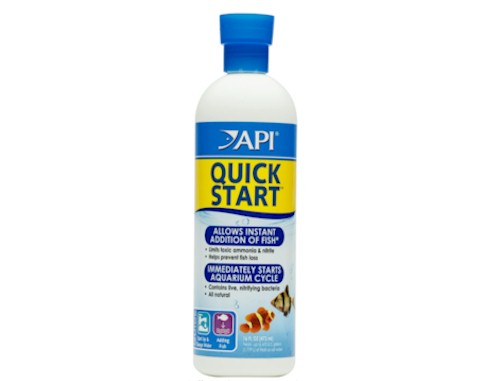
API Quick Start Nitrifying Bacteria
Once you cycle the tank, carry out weekly water changes. I usually recommend 15 to 20 percent weekly changes. Keep a water conditioner on hand to neutralize ammonia, chlorine, and other toxins in an emergency. I typically use the Seachem Prime Water Conditioner.
You can buy it from Amazon with the link below:

Seachem Prime Water Conditioner
By understanding those nine common reasons why guppies die, you can take proactive steps to prevent it from happening to your fish. Regular maintenance, proper feeding, and providing a healthy environment will help keep your guppies alive and thriving for years to come.
What to Do If Your Guppies Are Dying: Quick Action Steps to Save Your Fish
If you notice that your guppies are dying, it’s crucial to act quickly to prevent further deaths and save your remaining fish. Here are some quick action steps you can take to address the most common causes of guppy deaths:
- Check Your Water Parameters: As mentioned earlier, poor water quality is one of the leading causes of guppy deaths. Use a water testing kit to check your aquarium’s ammonia, nitrite, nitrate, pH, and temperature levels. If any of below parameters are outside of the recommended range, take immediate steps to address the issue.
- Water temperature: 72-82 °F (22-28 °C)
- Water pH: 6.8-7.8
- Ammonia and nitrites: 0 ppm
- Nitrates: <20 ppm
- Water hardness: 8-12dGH
- Chloramine and chlorine: 0 ppm
- Perform a Water Change: If your water parameters are off, performing a partial water change can help improve the quality of your aquarium’s water. Remove 10-20% of the water in your aquarium and replace it with fresh, dechlorinated water. Be sure to clean your filter media at the same time to remove any accumulated debris.
- Quarantine Sick Fish: If you suspect that one or more of your guppies are sick, move them to a separate quarantine tank to prevent the spread of disease. Treat the fish with an appropriate medication, and monitor them closely for any signs of improvement or deterioration.
- Adjust Your Feeding: Overfeeding can quickly lead to digestive issues and poor water quality. Ensure that you’re feeding your guppies the appropriate amount of food for their size and age. Avoid leaving uneaten food in the aquarium for an extended period of time, as this can lead to a buildup of harmful waste products.
- Address Overcrowding: If your aquarium is overcrowded, consider rehoming some of your fish or investing in a larger tank. Providing adequate space for your guppies can help reduce stress and aggression, and prevent the spread of disease.
- Check Your Tankmates: Aggressive or predatory tankmates can quickly lead to stress and injury in your guppies. Ensure that you’re providing a peaceful and harmonious community for your fish, and avoid adding incompatible species to your aquarium. You can click here read another article on this website that provides more details about this topic.
In addition to these quick action steps, it’s essential to maintain proper aquarium care and maintenance practices to prevent future guppy deaths. Regular water changes, proper filtration, and appropriate stocking levels can all help ensure a healthy and thriving guppy community. By taking the time to understand the common causes of guppy deaths and implementing appropriate care and maintenance practices, you can enjoy the beauty and joy of these colorful and fascinating fish for years to come.
The Tell-Tale Signs of a Dying Guppy: How to Identify and Respond to Them
Identifying a dying guppy can be challenging, as many of the signs of illness can be subtle and easily overlooked. You have to keep a close eye on your fish and knowing what to look for, therefore you can quickly respond to any potential health issues and prevent further deaths. Here are some of the tell-tale signs of a dying guppy:
- Changes in Behavior: Guppies that are dying may become lethargic, hiding in the corners of the tank or near the surface of the water. They may also lose their appetite and become less active, swimming slowly or not at all.
- Abnormal Swimming Patterns: A dying guppy may have difficulty swimming or maintaining its balance, swimming in circles or erratically. It may also swim upside down or float to the top of the water.
- Changes in Appearance: Sick or dying guppies may exhibit changes in their physical appearance, such as clamped fins, bloating, or discoloration. They may also develop lesions or ulcers on their bodies.
- Gasping for Air: If your guppy is gasping for air at the surface of the water, it may be a sign of poor water quality or low oxygen levels. This can quickly lead to further health issues or death if not addressed promptly.
- Changes in Waste Output: A dying guppy may produce abnormal waste, such as stringy or discolored feces. It may also stop producing waste altogether.
If you notice any of these signs in your guppies, it’s time to act quickly to prevent further deterioration and potential death. Isolate the sick fish in a separate tank or quarantine area and perform a water test to check your aquarium’s water quality. Adjust your feeding and perform a partial water change to address any issues. You may also need to treat your fish with an appropriate medication or seek the advice of a veterinarian or experienced aquarium hobbyist. By responding promptly and appropriately to the signs of a dying guppy, you can help ensure the health and well-being of your entire fish community.
How to Keep Your Guppies Alive and Thriving: Essential Tips for Healthy Fishkeeping
Keeping your guppies alive and thriving requires proper care and attention to their environment, diet, and health. Here are some essential tips for healthy fishkeeping:
1. Maintain Water Quality:
Consistently monitor and maintain water quality in your tank. Perform regular water tests and partial water changes to ensure healthy levels of pH, ammonia, nitrite, and nitrate. Ensure proper filtration and aeration to promote oxygenation of the water.
I personally do that with the API Water Test Kit. This bundle will accurately measure your pH, ammonia, nitrates, and nitrites levels. I like this bundle because it is easy to use and works quickly.
You can buy it from Amazon using the link below:

API Water Test Kit
To measure the chlorine and water hardness, you can go with this 16 in 1 Drinking Water Test Kit. It will also tell you if other toxins, such as copper, lead, iron, are present in your tank.
You can buy it from Amazon with the link below:

16 in 1 Drinking Water Test Kit
If you think the water is too stagnant, check the filter. If the device is still operational, get a more powerful filter. The old one has clearly failed to agitate the water adequately. Better yet, get some pumps and air stones.
2. Provide Adequate Space:
Avoid overcrowding your tank and provide enough space for your guppies to swim freely. As a general rule, allow one gallon of water per inch of fish, but ensure you are following the specific requirements of your fish species.
The tank I chose for my fish is the Tetra Aquarium 20 Gallon Fish Tank Kit. It comes with built-in features of the high-end aquariums, including a scratch-resistant glass, impressively quiet filter, LED hood, and a heating system.

Tetra Aquarium 20 Gallon Fish Tank Kit
If your tank is too small, oxygen deficiencies will become a problem, not to mention ammonia spikes. A more affordable option would be picking the right number of guppies for your existing tank. For your convenience, here is an article where I discussed how many guppies should be kept together.
Large tanks require multiple pumps and air stones to prevent oxygen deficiencies from becoming a problem. When my tank didn’t have enough oxygen, I simply installed the Hygger Aquarium Air Stone. Besides being extremely quiet, that device will oxygenate your water within minutes.
You can buy the Hygger Aquarium Air Stone from amazon with the link below:
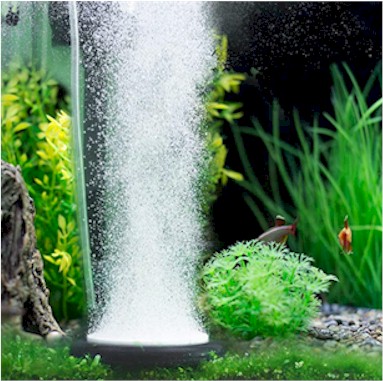
Hygger Aquarium Air Stone
3. Feed Appropriately:
Feed your guppies a balanced diet of quality fish food, including flakes, pellets, and live or frozen foods. Avoid overfeeding, which can lead to poor water quality and health issues.
4. Maintain Water Temperature:
Ensure that your tank’s water temperature remains consistent and within the optimal range for your guppies, usually between 72-82°F (22-28°C).
5. Choose Healthy Fish:
Select healthy guppies from reputable breeders or suppliers, and avoid purchasing fish that show signs of illness or stress. Quarantine new fish for several weeks to ensure they are not carrying diseases or parasites that could infect your other fish.
6. Provide Adequate Hiding Places:
Create hiding places in your tank, such as plants, rocks, or caves, to allow your guppies to retreat when feeling stressed or threatened.
7. Monitor Tankmates:
Ensure that your guppies are compatible with other fish species in your tank and that they are not aggressive or territorial towards your guppies.
As you follow these essential tips, you can create a healthy and thriving environment for your guppies, preventing illness and promoting their overall well-being. Remember to consistently monitor your tank and respond quickly to any potential health issues, and you’ll enjoy years of happy and healthy guppies.
Preventing Guppy Deaths After Water Changes: What You Need to Know and How to Avoid Them
Sudden deaths of guppies after a water change can be a frustrating and confusing experience for any fish keeper. Performing regular water changes is essential for maintaining the water quality in your tank and promoting the health of your guppies. Here’s what you need to know to prevent your guppies’ death after a water change:
- Avoid Drastic Changes: One of the most common reasons for guppy deaths after a water change is a sudden and drastic change in water parameters. To avoid this, ensure that the new water added to the tank is the same temperature as the existing water, and that it has been treated with a water conditioner to remove chlorine and other harmful chemicals.
- Test Water Parameters: Before and after a water change, it’s important to test the water parameters to ensure that they are within the optimal range for your guppies. Sudden changes in pH, ammonia, nitrite, or nitrate can be deadly to your fish.
- Partial Water Changes: It’s recommended to perform partial water changes, changing 25-30% of the water in the tank at a time, rather than a complete water change. This helps to avoid sudden changes in water parameters and reduces stress on your guppies.
- Don’t Clean Everything at Once: Avoid cleaning everything in your tank at once. This includes decorations, substrate, and filters. Doing so can cause a significant reduction in beneficial bacteria in your tank, leading to harmful ammonia spikes and potentially deadly water changes.
- Maintain a Consistent Schedule: Keep a consistent schedule for water changes to ensure that the water quality in your tank remains stable. The frequency of water changes may vary based on the size of your tank, the number of fish you have, and other factors, but it’s generally recommended to perform water changes every two weeks.
- Monitor Guppy Behavior: Observe your guppies closely after a water change, looking for any signs of stress or illness. Keep a watchful eye on their behavior and feeding patterns. If you notice any unusual behavior or symptoms, take action immediately to prevent further health issues.
If you follow these tips, you would prevent guppy deaths after a water change and maintain a healthy environment for your guppies. Regular water changes are essential for the health and longevity of your fish, but it’s important to do so safely and cautiously to avoid any negative impacts on your guppies.
How to Revive a Dying Guppy: Tips and Tricks to Help Your Fish Bounce Back
If you notice that one of your guppies is on the verge of death, it’s not too late to try and save it. There are a few tips and tricks you can use to try and revive a dying guppy:
1. Check Water Parameters:
First, check your water parameters to ensure that your guppy isn’t suffering due to poor water quality. If the water parameters are not optimal, take corrective measures immediately.
2. Isolate the Guppy:
If you notice that one of your guppies is sick, it’s important to isolate it from the other fish to prevent the spread of the disease.
3. Salt Bath:
You can try a salt bath as a method of reviving a dying guppy. Dissolve 1 tablespoon of aquarium salt in a gallon of water, and add your sick guppy to the solution for about 15-30 minutes.
4. Medications:
If you’ve identified that your guppy is suffering from a specific disease or parasite, you can use medications to treat the illness. Follow the instructions carefully and dose accordingly.
You can buy it on Amazon with the link below:
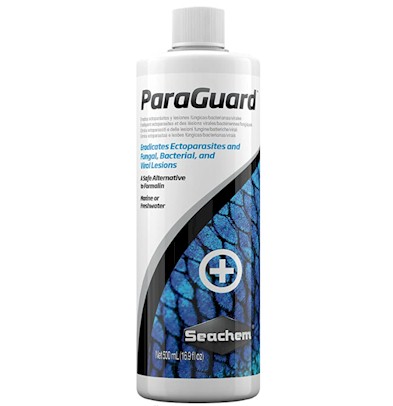
Seachem Paraguard
Use five m/L (1 capful) of ParaGuard for every 40 L (10 US gallons). You may repeat this dose daily as long as your fish present no signs of stress. Hopefully, over time, you may see the symptoms resolving.
5. Fresh Foods:
Try feeding your guppy some fresh foods such as frozen brine shrimp or live mosquito larvae. This will help to stimulate its appetite and provide the necessary nutrients to help it recover.
That are all things you could do when you realize your guppies are going to die. Remember, prevention is always better than cure, and it’s important to maintain a healthy environment for your guppies to prevent illness and death. However, if you do notice a sick or dying guppy, these tips can help you give it a fighting chance to recover.

